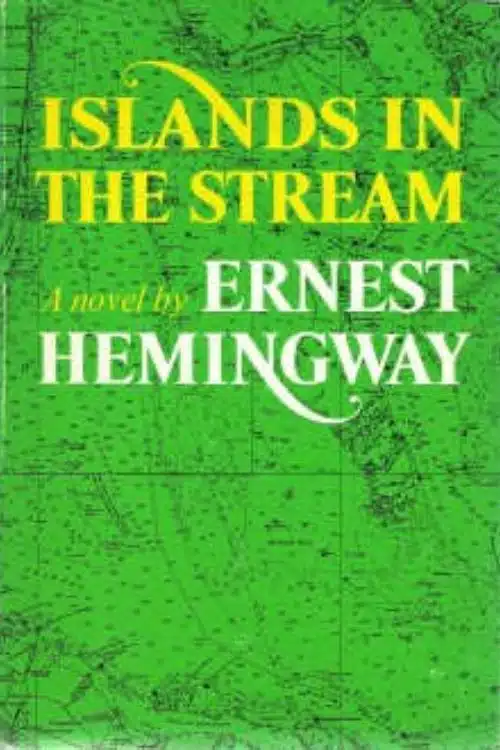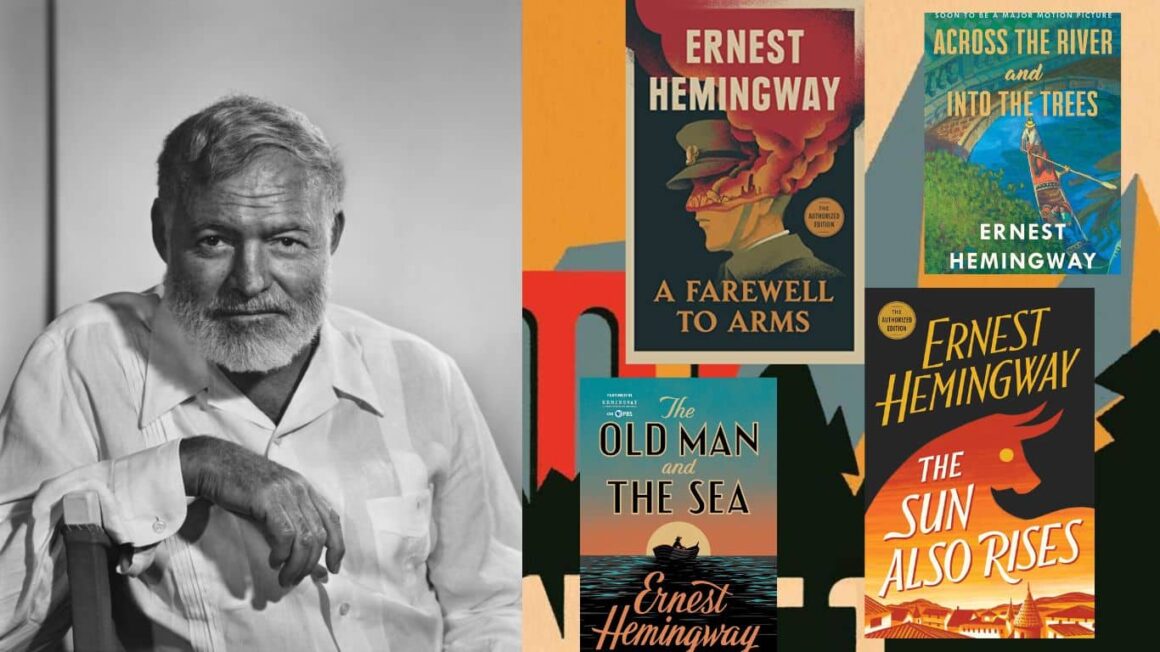Ernest Hemingway is widely regarded as one of the greatest American writers of the 20th century, known for his minimalist yet impactful writing style. His works are often characterized by their simple, direct language and emphasis on themes such as masculinity, war, love, and loss. Hemingway’s novels and short stories have become classics, influencing generations of writers and readers alike. From his iconic debut novel “The Sun Also Rises” to his Pulitzer Prize-winning “The Old Man and the Sea,” Hemingway’s works continue to captivate and inspire readers around the world. In this article, we will explore10 Must Read Books of Ernest Hemingway, delving into the stories, themes, and writing styles that have made Hemingway a literary legend.
10 Must Read Books of Ernest Hemingway
The Sun Also Rises

This novel by Ernest Hemingway explores the themes of love, war, and disillusionment. Set in Paris and Pamplona in the 1920s, the story follows a group of American and British expatriates as they travel to the annual Running of the Bulls festival in Spain. The protagonist, Jake Barnes, is a journalist and World War I veteran who is in love with Lady Brett Ashley, a beautiful but self-destructive British socialite. The novel is known for its spare, realistic prose and its portrayal of the “Lost Generation” of post-war expatriates searching for meaning in a world that has been shattered by war. The Sun Also Rises is widely considered to be one of Hemingway’s greatest works and a masterpiece of modernist literature.
A Farewell to Arms

Set during World War I, this novel by Ernest Hemingway follows the story of an American ambulance driver named Frederic Henry. As he falls in love with a British nurse, Catherine Barkley, their relationship blossoms amidst the turmoil of war. Hemingway’s sparse and direct writing style is evident in this novel, as he expertly portrays the harsh realities of war and the complexities of love and loss. The novel explores themes of masculinity, identity, and the search for purpose in life, making it a powerful and moving work of literature.
For Whom the Bell Tolls

Set during the Spanish Civil War, this novel follows the story of an American professor, Robert Jordan, who has been enlisted to fight for the Republican side. He is tasked with blowing up a bridge in order to support a major offensive. Jordan meets and falls in love with Maria, a young Spanish woman who has been rescued from the fascists. As the deadline for the attack approaches, Jordan and his comrades face increasing danger and uncertainty. The book explores themes of courage, sacrifice, and the effects of war on individuals and society.
The Old Man and the Sea

Considered one of Ernest Hemingway’s finest works, this novella tells the story of an old fisherman, Santiago, who has been on a long streak of bad luck and has not caught a fish in 84 days. Despite the scepticism of his fellow fishermen, Santiago sets out to sea in search of his catch. On the third day, he finally hooks a giant marlin and spends days fighting with the fish. The book explores the themes of perseverance, determination, and the human struggle against nature. Hemingway’s simple yet powerful prose brings the story to life and makes it a timeless classic. The Old Man and the Sea is a beautiful, poignant tale of one man’s struggle and ultimate triumph.
To Have and Have Not

The story follows Harry Morgan, a fisherman who turns to illegal smuggling to make ends meet. However, things take a turn for the worse when Harry finds himself caught between corrupt officials and dangerous criminals. Hemingway’s stark prose and vivid descriptions of the tropical locales provide a perfect backdrop for this gritty and suspenseful tale. With complex characters and a gripping plot, To Have and Have Not is a must-read for fans of Hemingway and lovers of great literature.
Islands in the Stream

The book is a collection of three separate stories, each exploring different stages in the life of the protagonist, Thomas Hudson, a successful painter. The first story is set on the island of Bimini in the Bahamas, where Thomas spends time with his three sons and old friends. The second story takes place during World War II, where Thomas is now a U-boat hunter in the Gulf Stream. The final story depicts Thomas in his old age, living alone on his boat, and reminiscing about his past. The novel is a powerful exploration of the complexities of human relationships, the horrors of war, and the joys and sorrows of life.
The Garden of Eden

The Garden of Eden is a novel by Ernest Hemingway that was published posthumously in 1986. The story is set in the 1920s and follows the complex and unconventional relationship between a young American writer named David Bourne, his wife Catherine, and a beautiful Italian woman named Marita. The novel explores themes of love, sexuality, gender roles, and identity in a way that was ahead of its time. Hemingway’s writing style is stark and concise, with a focus on sensory details and emotional complexity. The Garden of Eden is a fascinating and controversial work that offers a unique glimpse into Hemingway’s literary vision and his personal life.
The Torrents of Spring

The Torrents of Spring is a satirical novel by Ernest Hemingway, published in 1926. The story is a parody of Sherwood Anderson’s novel, Dark Laughter, and follows the life of a struggling writer named Scripps O’Neil. The novel is set in the town of Petoskey, Michigan, where Scripps is torn between his love for a wealthy socialite named Yogi Johnson and his desire for literary success. Hemingway’s wit and humour are on full display in this novel, as he pokes fun at the literary establishment and the absurdity of the writing world. Despite receiving mixed reviews upon its release, The Torrents of Spring remains a must-read for fans of Hemingway’s work and those interested in literary satire.
Across the River and Into the Trees

The story follows the journey of an aging American colonel, Richard Cantwell, who travels to Venice, Italy, to spend time with a young Italian countess named Renata. The book explores themes of love, loss, and mortality as Cantwell reflects on his life and experiences. Hemingway’s vivid descriptions of Venice, its people, and the surrounding countryside bring the story to life and transport readers to another time and place. The novel was not as well-received as some of Hemingway’s other works, but it remains an important part of his literary legacy.
Death in the Afternoon

Ernest Hemingway’s “Death in the Afternoon” is a captivating and comprehensive exploration of the tradition, art, and brutality of bullfighting. Hemingway’s passion for the spectacle shines through in his vivid descriptions of the events, the emotions, and the intricacies of the sport. The book not only covers the physical aspects of the bullfight but also the cultural and historical significance behind it. Hemingway’s unique style of prose blends factual reporting with personal experiences and opinions, making the book a captivating and enlightening read. “Death in the Afternoon” is an excellent example of Hemingway’s literary prowess and his ability to explore complex themes with clarity and depth.
Also Read: Top 10 Books to Read in Your 30s





